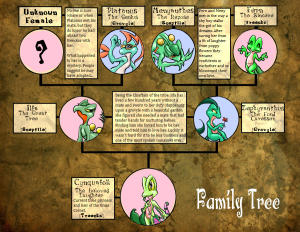To control negative emotions in kids, validate their feelings and listen actively to understand what’s upsetting them. Provide positive attention when they take steps to calm down, such as deep breathing, to help them manage their emotions effectively.
Helping children manage negative emotions is a crucial aspect of their emotional development. By acknowledging their feelings, parents can guide them through coping techniques and problem-solving to foster resilience. Children often struggle with handling their emotions, and parents need to provide support and guidance during these challenging moments.
By using emotion coaching, parents can empower their kids to cope with fear, anger, and sadness effectively. This proactive approach helps children navigate negative emotions and develops essential emotional skills for the future. Understanding the triggers and providing coping strategies can make a significant difference in a child’s ability to regulate their emotions. Hence, it’s essential to take a proactive role in helping kids steer through negative emotions and build emotional resilience.
Table of Contents
ToggleRecognizing And Labeling Negative Emotions
Helping children recognize and label their negative emotions is essential for their emotional development. It enables them to understand and manage their feelings effectively, leading to healthier emotional responses.
Identifying Emotions In The Body
Children can be taught to recognize and label negative emotions by understanding the physical sensations associated with each emotion. By identifying how their body feels when experiencing different emotions, they can better articulate their feelings.
Understanding The Connection Between Emotions And Actions
It’s important for kids to understand the link between their emotions and their actions. Teaching them how certain emotions can influence their behavior will empower them to make positive choices when facing negative feelings.
Using A Feelings Thermometer
Introducing children to a feelings thermometer can help them visualize and understand the intensity of their emotions. By using this tool, kids can learn to associate specific emotions with their corresponding level of intensity, enabling them to regulate their emotional responses more effectively.
“`
Recognizing and labeling negative emotions is crucial for children’s emotional well-being. It helps them understand and manage their feelings, leading to healthier emotional responses. Children can be taught to identify emotions in the body, linking physical sensations to specific emotions. They should also understand the connection between emotions and actions, empowering them to make positive choices. Additionally, using a feelings thermometer allows visualizing and understanding the intensity of their emotions, facilitating better regulation.
Teaching Coping Skills
Teaching coping skills is crucial in helping kids control negative emotions. By validating their feelings, practicing coping techniques, and providing positive attention, children can learn to separate their emotions from their behaviors and manage their emotions effectively.
Exploring Movement Skills To Manage Emotions
Teaching coping skills involves exploring various movement activities that can help kids manage their emotions effectively. Engaging in physical activities such as yoga, dance, or simple exercise routines can help children release pent-up energy and alleviate feelings of stress or anxiety. Encouraging kids to engage in movement-based coping strategies not only promotes emotional regulation but also enhances their overall physical well-being.
Practicing Coping Techniques
Kids need to practice coping techniques that enable them to address and control negative emotions. This can include deep breathing exercises, visualization, or progressive muscle relaxation. By incorporating these coping techniques into their daily routine, children can develop the ability to manage their emotions in a healthy and constructive manner. Providing them with opportunities to practice these techniques in different situations will empower them to effectively navigate challenging emotions.
Taking Action To Manage Emotions
Implementing strategies to manage emotions is crucial for children’s overall emotional well-being. Encouraging kids to take action by utilizing coping skills and techniques enables them to gain a sense of control over their emotions. Teaching them how to identify triggers and apply appropriate coping mechanisms empowers them to navigate negative emotions in a proactive manner, fostering resilience and emotional strength.
Helping Kids Understand And Control Emotions
Children, just like adults, experience a wide range of emotions. However, they may struggle to understand and control these emotions, leading to outbursts or behaviors that may be deemed inappropriate. As parents or guardians, it is crucial to teach children how to identify and manage their emotions effectively. By helping kids understand and control their emotions, we can empower them to navigate challenging situations with resilience and develop healthy coping mechanisms.
Helping Kids Identify Their Emotions
One of the first steps in helping children control their emotions is to assist them in identifying what they are feeling. Teach them how to recognize various emotions such as happiness, sadness, anger, or fear. Encourage them to label their emotions and express them in a healthy way. For example:
- Talking about feelings: Engage in open and honest conversations with your child about different emotions. Ask them questions like, “How are you feeling today?” or “What made you feel that way?” This helps them understand that it’s normal to experience a range of emotions.
- Body sensations: Help your child connect physical sensations to specific emotions. For instance, explain how a rapid heartbeat or tense muscles may indicate feelings of anger or anxiety. This awareness can assist them in recognizing their emotions before they escalate.
- Visual cues: Use visual aids like emotion cards or charts with facial expressions to help your child associate specific emotions with corresponding visual cues. This can help them better understand their own feelings as well as recognize emotions in others.
Teaching Kids The Difference Between Feelings And Behaviors
It is essential to teach children that while feelings are valid, their behaviors should be appropriate and respectful. Help them differentiate between their emotions and how they choose to respond. Here are some strategies to achieve this:
- Modeling behavior: Be a role model and demonstrate how to appropriately express and manage emotions. Show your child how to express their feelings through words rather than resorting to aggression or tantrums.
- Discussing consequences: Help your child understand the consequences of negative behaviors. Explain how their actions may affect others and how they can make amends if they do respond inappropriately.
- Practice problem-solving: Teach your child problem-solving techniques to handle challenging situations. Encourage them to brainstorm alternative ways to handle their emotions constructively, such as taking deep breaths, counting to ten, or engaging in physical activities.
Seeking Professional Help If Needed
If your child’s emotional struggles persist or significantly impact their daily life, seeking professional help is crucial. A professional therapist or counselor can provide guidance and support tailored to your child’s specific needs. They can teach your child additional coping mechanisms, help them develop emotional regulation skills, and provide a safe space for them to express their feelings.
Remember, helping kids understand and control their emotions is a continuous process that requires patience and consistency. By supporting their emotional well-being, we empower them to navigate life’s challenges with confidence and resilience.

Credit: www.amazon.com
Supporting Kids In Calming Down
Validating your child’s feelings and actively listening to them can help them calm down.
Providing positive attention to your child when they exhibit calming behaviors is essential.
It’s crucial to assist children in understanding the difference between their emotions and actions.
Promoting Emotional Resilience
Mentally preparing kids to handle negative emotions is crucial for their emotional well-being. Encouraging emotional resilience empowers children to face challenges with confidence, leading to healthier emotional responses.
Noticing And Paying Attention To A Child’s Negative Emotions
- Observe your child’s emotional cues regularly.
- Provide a safe space for them to express their feelings.
- Encourage open communication about emotions.
Coaching Kids Through Problem-solving And Feeling Better
- Teach children problem-solving skills to manage negative emotions.
- Guide them to identify triggers and effective solutions.
- Empower kids to take actions to alleviate negative feelings.
Emotion Coaching: Helping Kids Cope With Negative Feelings
| Approach | Description |
|---|---|
| Empathy | Show understanding and validate your child’s emotions. |
| Active listening | Listen attentively to your child’s concerns without judgment. |
| Encouragement | Offer support and encouragement to help kids navigate their emotions. |

Credit: www.facebook.com

Credit: www.researchgate.net
Frequently Asked Questions Of Control Negative Emotions In Kids
How Can I Help My Child Control His Emotions?
To help your child control emotions, validate their feelings, and actively listen to understand. Provide positive attention when they calm down and teach coping techniques. Acknowledge their emotions and help them work through solutions. Seek professional help if emotions are causing problems.
How Do You Deal With An Emotionally Unstable Child?
Help an emotionally unstable child by validating their feelings, teaching coping techniques, and being patient. Seeking professional help may also be necessary.
At What Age Can A Child Regulate Their Emotions?
Children can begin to regulate their emotions around age 5. It is important to validate their feelings and provide positive attention to help them calm down. Additionally, teaching them coping techniques and seeking professional help if needed can be beneficial.
Why Is My Child Overly Emotional?
Your child may be overly emotional due to natural development, stress, or underlying issues. Communicate and observe for changes.
Conclusion
Helping children control their negative emotions is crucial for their emotional well-being and overall development. By validating their feelings, listening actively, and providing positive attention, we can empower them to handle their emotions effectively. Teaching them coping techniques, encouraging patience, and seeking professional help when needed can also make a significant difference.
Remember, acknowledging their feelings and guiding them through problem-solving and emotional regulation can lead to resilient and emotionally healthy children. Let’s support our kids in navigating negative emotions and equipping them with essential life skills.

Mother of Two children. I’m a former teacher with a background in child development and a passion for Good parenting. I understand child development and know how to develop activities to help children learn and grow. Spare time, I enjoy spending time with my family, reading, and volunteering in my community. Read More








